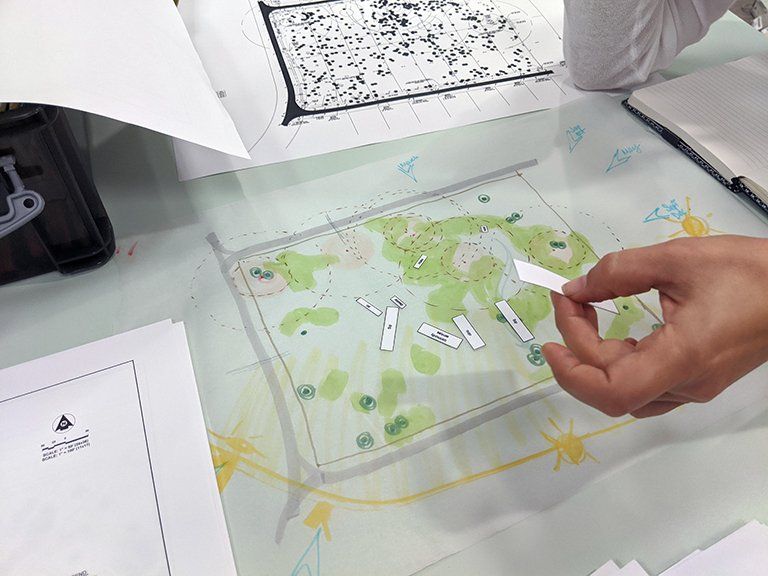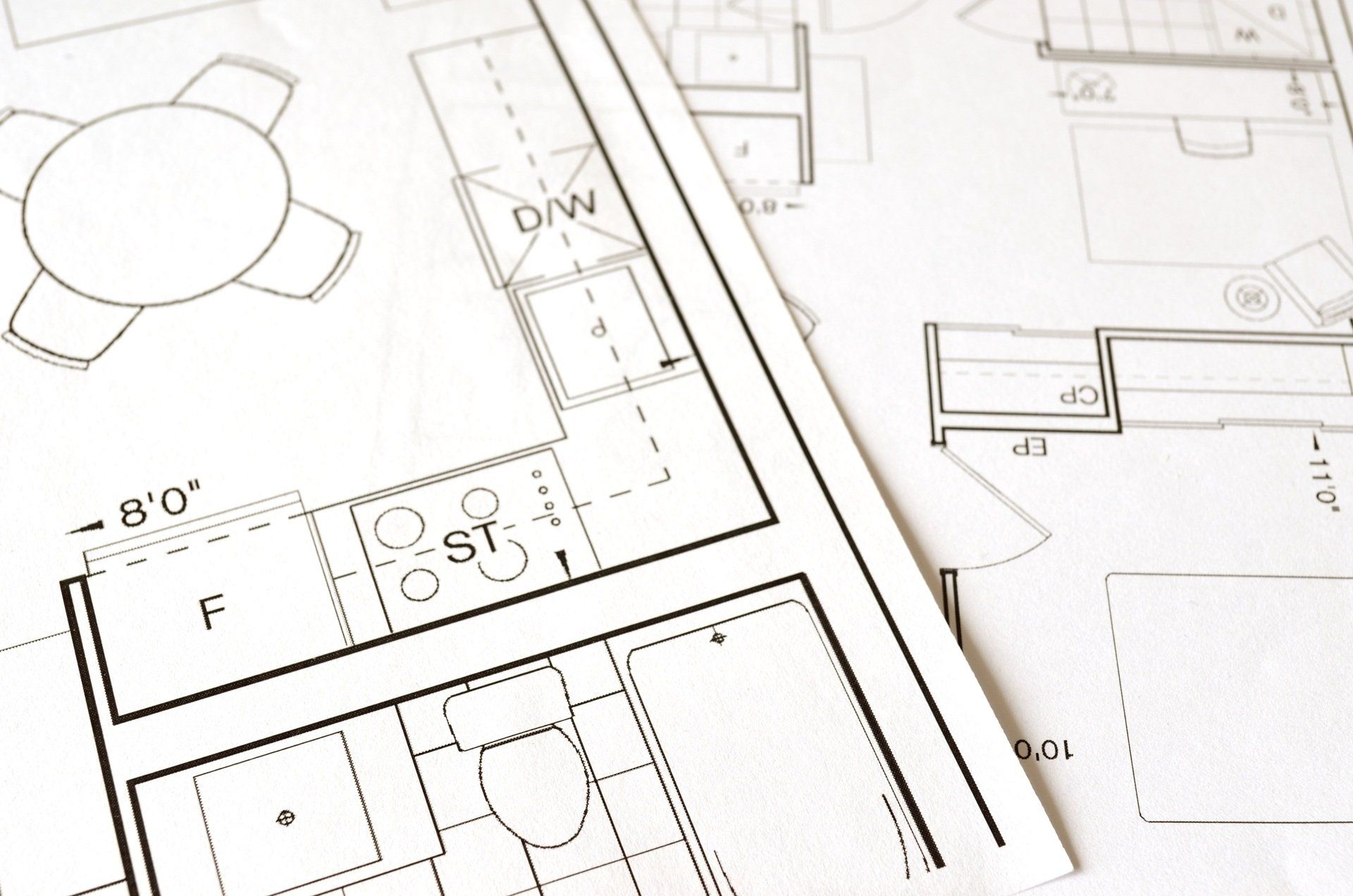Series: An architect’s advice for non-profits
Master planning during and after Covid-19

Master Plan Now
There are two types of non-profit master plans. As described in Cramer and Assoc.’s article, Does Your Non-Profit Need to Develop a Master Plan, there is the business type of master planning for non-profit organizations.
There is also an architectural master plan where we holistically approach your project as architects to provide overall guidance on:
- What and how to build your proposed building or campus
- What and how to design your new building or expansion
- Where to build your new project
- Overall input on your real estate development
Why we are huge proponents of master planning.
Just like it is critical for a non-profit to have a clear mission statement, it is just as important for a non-profit to master plan their future growth and expansion, giving them the ability to think ahead.
Master planning is not just about a single idea or building. Its purpose is to truly dial into the needs of the organization’s future.
Though good design is critical to a project’s success, proper master planning sparks the beginning of that process and creates the backbone for future design success.
We look at master planning as a puzzle.
How do you solve it by taking a proactive approach, while avoiding a reactive response?
Here are the main pieces of the master plan puzzle for non-profit organizations:
- Having a supportive board that understands the organization’s needs
- Creating a committee to determine the best courses of action
- Finding the right property
- Creating a well thought out program based on the organization’s needs and desires
- Creating a collaborative team to look at the project holistically
A Supportive Board
Before any organization proceeds with expansion or master planning, a group of board members that believes in the cause, the need for expansion and the understanding that growth is critical for the mission is necessary. Just like the corners of a puzzle. (At least a rectangular one.)
Board members need to understand that money will need to be spent at different phases throughout the process and that this financial commitment has long term benefits, not short term financial strains.
It is always best to have a person(s) on the board that has experience with construction and working with architects. Being able to speak the language or at least understand some of the terminology helps everyone involved during a master plan process.
I am also a believer in keeping conflicts of interest out of the board setting. There should be no ulterior motives or inside goals of any members to acquire any part of the project for themselves. This is one of the reasons why I do not like architects sitting on boards that then do work for that organization. It is a conflict of interest.
There should be a clear designation between hiring an architect to further the organization and board’s goals and getting an architect’s input who happens to be on the board. The two should be completely separate. (The same goes for general contractors.)
A Building Committee
Committees should be small, no larger than 5 people, and should absolutely include at least one person with building experience. This will help when presenting the architectural team’s ideas to the board. This committee may also participate in local jurisdiction meetings for approvals and work with City officials, engineers, etc. Familiarity with the process can only help in the ultimate success.
The committee helps the architect and the team as a liaison to the board and even to the Executive Director, providing guidance and recommendations to help the project move along smoothly. They keep the puzzle defined and from falling off of the table.
A good committee allows the team to be creative, but also guides them based on the needs of the organization and the desires of the decision makers. This keeps the master plan in check and from deviating too far off course.
Finding the Right Property
Finding the right property is critical and it sometimes takes an inordinate amount of time. This is one of the reasons why we promote starting master planning as soon as possible. Given the current situation with Covid-19, this is a perfect time to begin looking for properties. Not only is there a bit of a downtime in the commercial world, but there is also a possibility that land costs may be more beneficial to buyers than sellers.
Due diligence takes time and until things get totally "back to normal," time is on everyone’s side right now. We should take advantage of this while we can.
As I often say, there is no reason to hire an architect to design a project if you don’t own a piece of property. However, an architect is uniquely suited for helping a non-profit organization find that property.
Either working with realtors or without, the architect can help make determinations like parking, or setbacks or what size building can fit on a site. This level of information can potentially save organizations a tremendous amount of time and money during the due diligence process.
A Good Program
A good program is the basis for a good building design. The best programs are not created by one person in the organization. The best programs include staff or other people that know the operations and the needs of all involved, including patrons if appropriate.
When master planning, programs should include everything and the kitchen sink. When beginning this process, a building program, for master planning purposes, allows the architect to fully understand the scope and then incorporate that scope into the design.
We often meet with members of the staff ourselves to fully understand the needs of the organization. If an existing non-profit is expanding, walking through the spaces is always helpful when figuring out the ultimate layout.
Programs provide square footage needs, adjacency requirements, and circulation paths and ultimately give the architect and their team a true understanding of what the master plan should achieve. (Like the picture on the box, right?)
It also sets up the team properly to accommodate the typical design and engineering aspects, along with specialty components and consultants required to successfully complete the job.
A Collaborative Team
This brings me to the final stage of master planning. A good team is the key to any project’s success. You can have a good architect. You can have a good engineer. You can have a good committee. You can have a well-intentioned and much needed organization. But if the team is not in place to begin the master planning phase, the final success of the project will be hindered.
Creating that team in the beginning is critical to any project’s success. This team should include the architect, the contractor, engineers, consultants, a building committee and a strong executive director.
Not every member may be necessarily retained or involved from day one, but we have found that creating that team sooner than later allows us as your architect to have access to these consultants to answer questions that may come up along the way.
With any non-profit, compared to let’s say ... commercial developers, there are typically more questions than usual during the master planning process. It is our goal as your architectural team to provide you with the answers to those questions quickly and succinctly. They often impact decisions critical to the mission and almost always have financial implications.
Master Plan Success
The goal in master planning is to prevent reactive decisions or short term fixes. Instead, we look to achieve proactive, long term gains. That’s where proper master planning comes into play, focusing on the needs of the non-profit organization, allowing them to envision their future in a thoughtful and strategic manner.
We understand that any non-profit organization’s main concern is financial stability. Everyone is hesitant to spend money in a down market, to say the least, during a pandemic.
We also understand the need to find balance between operations and future growth.
However, both are connected in more ways than one. An organization cannot lose sight of the fact that if they are to continue to provide services to the public, to their patrons, to their community, to people that need their services for personal growth and stability, than those benefits will never disappear.
In fact, by hesitating to move forward out of financial concerns, it can cause greater problems down the road as the needs of your organization does grow and become more necessary for the community they serve.
By aggressively moving forward, the organization may increase the opportunities to grow and take advantage of donors and community interest during these trying times. As architects, it is our responsibility and commitment to help and work with organizations in these situations.
Conclusion
We enjoy the puzzle. We enjoy the challenge. We enjoy the satisfaction of working with non-profits that we believe in and we feel are truly providing a positive service to society.
So what does this all mean? In my opinion, there is no better time in recent history to maximize and expedite the opportunity to focus on master planning your built environment in order to sustain long term community services specific to your mission.
Professionally, it’s exciting to think about the opportunities that exist for non-profits organizations, boards of non-profits and executive directors of non-profits to navigate through this new phase of our lives. I’d love to hear from readers as to what they’re learning and finding in their own experiences with their organizations. To share your comments, email barron@theschim.com . Also, don’t forget to subscribe to our newsletter, Methods and Madness for more insight, information, and visual stimulation for all things architecture and interior design related.




